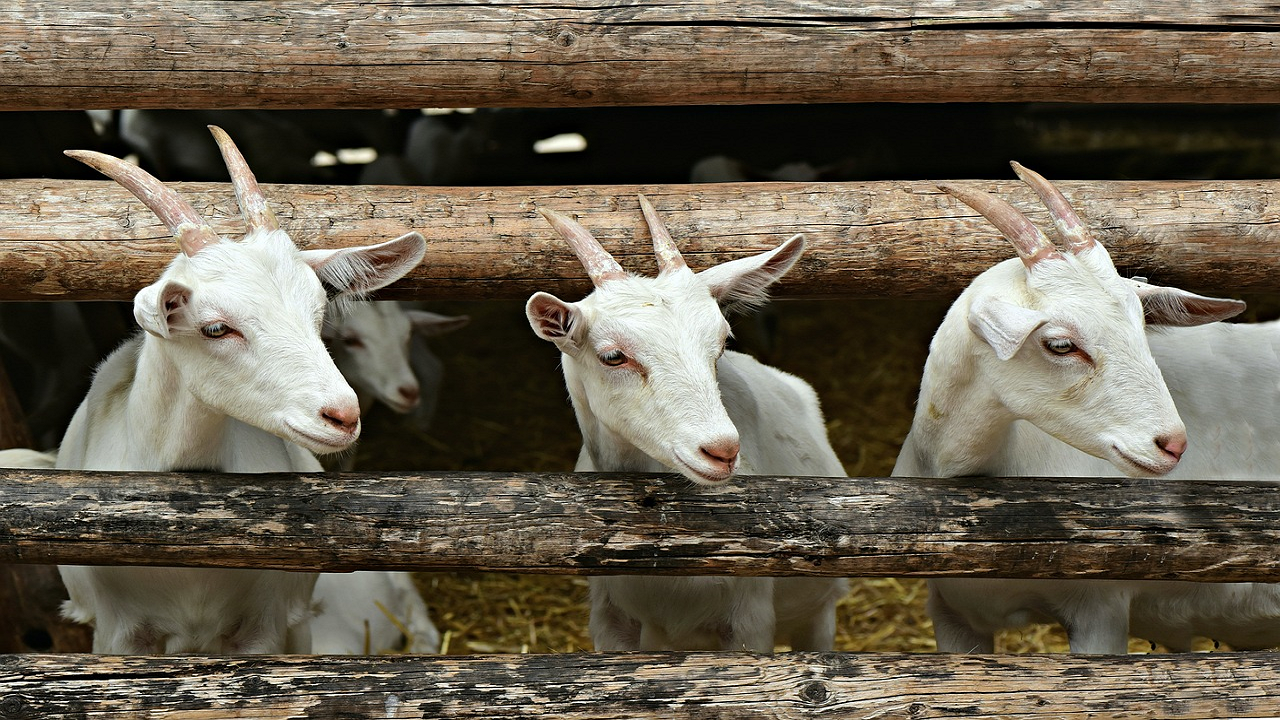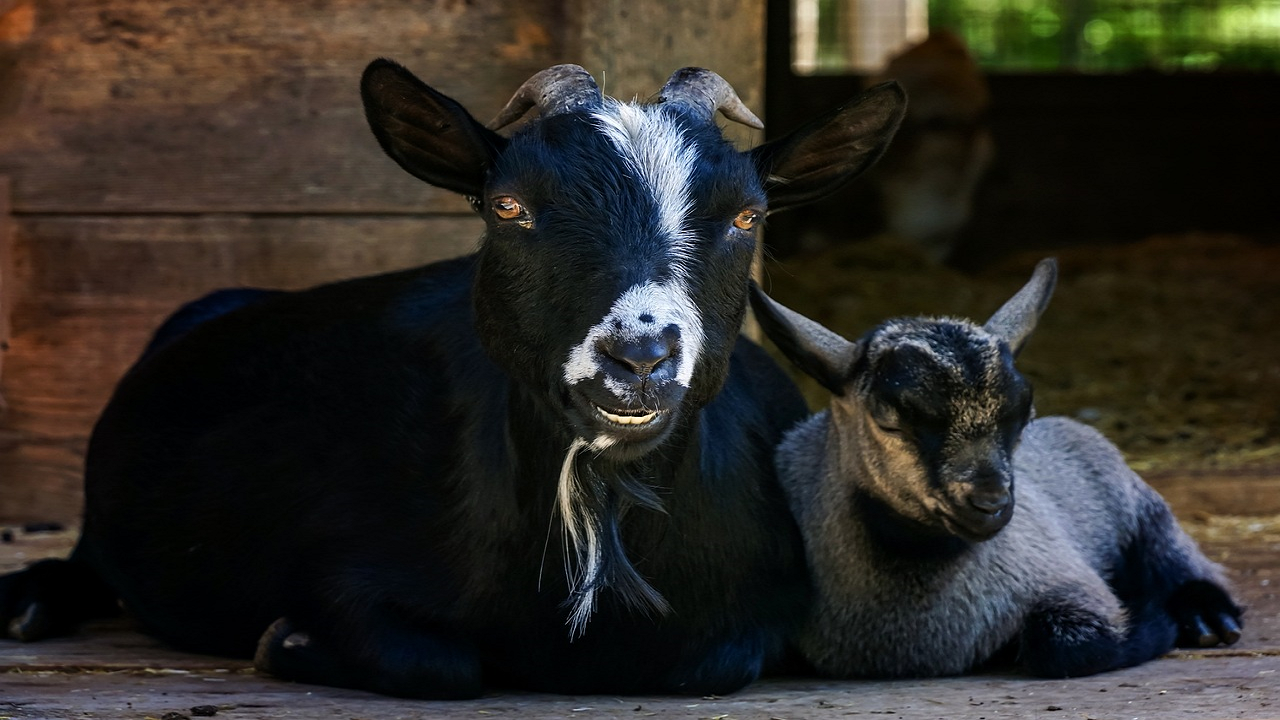
Goats in the market are in demand ahead of Eid al-Adha. Rearing goats is indeed a lucrative business plan. If you're considering entering the world of goat farming and looking for profitable opportunities, understanding the top goat breeds is a crucial starting point. Selecting the right breed is key to ensuring success in your goat farming venture. Today, we will explore some of the top goat breeds for meat, milk, or fibre production.
Each breed has unique characteristics and advantages, such as high milk yield, fast growth rates, or excellent meat quality. By gaining insight into these breeds, you can make an informed decision about the type of goat farming business that aligns with your goals and maximizes profitability. Whether you're interested in dairy goat farming, meat production, or specialized fibre breeds, this guide will provide you with goat breeds and their characteristics.
The top Goat Breeds are as follows
Boer Goat
The Boer goat is a breed renowned for its exceptional meat production and adaptability. Originating from South Africa, it has gained worldwide recognition for its muscular build, fast growth rate, and ability to thrive in various climates. Boer goats have a white body with a reddish-brown head and neck, and they exhibit medium to large curved horns. They are known for their rapid growth, reaching marketable weights at a young age, making them highly desirable for meat production.
Their adaptability allows them to withstand different environmental conditions, and their docile temperament makes them easy to handle. Boer goats continue to play a significant role in the global meat industry, providing a reliable source of high-quality, lean meat.
Malwa Goat
The Malwa goat is a breed known for its distinct characteristics and suitability for milk production. Originating from the Malwa region of Central India, this breed has gained recognition for its ability to thrive in the harsh climatic conditions prevalent in the area. Malwa goats are medium-sized with a sturdy build and a variety of coat colors, including white, black, brown, and speckled patterns. They have a prominent nose and short, erect ears. One of their notable features is their high milk production capacity, with some individuals known to produce up to 2-3 litres of milk per day. Their milk is rich in fat content, making it suitable for the production of dairy products like cheese and butter. Additionally, Malwa goats are highly adaptable, resilient, and known for their ability to graze on a wide range of vegetation, making them valuable assets for small-scale farmers and dairy enthusiasts.
Tellicherry goat
The Tellicherry goat is the best goat breed in India. It is native to the Malabar region of Kerala, India. It is named after the city of Tellicherry, which is known for its thriving goat population. These goats are medium to large-sized and have a distinctive appearance, characterized by a strong and sturdy build. They typically have a brown or black coat with white markings on the face and body.
Tellicherry goats are highly valued for their meat production, and known for their tender and flavorful meat. They are also adaptable to various climatic conditions, making them well-suited for different regions. With their robust nature and ability to efficiently convert feed into meat, Tellicherry goats have become a preferred choice for meat producers and goat enthusiasts alike.
Black Bengal Goat
The Black Bengal goat is a small-sized breed that originated in Bangladesh, particularly in the regions of West Bengal and Bihar. It can be said as the exotic goat breed in India. It is known for its distinct jet-black coat, which is the primary characteristic that sets it apart. Despite their small size, Black Bengal goats are incredibly hardy and adaptable to harsh environments, including dry and hilly areas. They are well-suited for extensive grazing and require minimal management. These goats are primarily raised for meat production, as they provide lean and flavorful meat. Additionally, they have excellent reproductive capabilities and are known for their high twinning rate, making them valuable for breeding purposes. The Black Bengal goat is an important livestock resource in the region, contributing to many small-scale farmers' livelihoods and playing a significant role in the local economy.
Jamunapari Goat
The Jamunapari goat, also known as the Jamnapari or Jamunapari, is a large and graceful breed of goat native to India. It derives its name from the Jamuna River in Uttar Pradesh, where it was first discovered. Jamunapari goats are highly valued for their distinctive appearance and excellent milk production. They have a long, slender body with a convex face profile, long pendulous ears, and large, expressive eyes. Their coat can vary in color, ranging from pure white to a combination of white and tan or black. Known for their high milk yield, Jamunapari goats are renowned for their rich and creamy milk, making them popular among dairy farmers. They are also raised for meat, as their meat is considered tender and flavorful. Jamunapari goats have gained popularity both within India and internationally, and their breeding and conservation efforts continue to contribute to the sustainability of this esteemed breed.

Sirohi Goat
The Sirohi goat is a popular breed in India native to the Sirohi district of Rajasthan, India. These goats are medium-sized with a compact and sturdy frame. They have a distinctive appearance, characterized by a predominantly brown coat with white markings on the face and legs. Sirohi goats are highly adaptable to arid and semi-arid regions, making them well-suited for the harsh climatic conditions prevalent in Rajasthan. They are primarily raised for meat production and are known for their excellent meat quality, being tender and flavorful. Sirohi goats are also valued for their high fertility rates and good mothering instincts. Their ability to graze on a wide variety of vegetation further adds to their appeal as an ideal choice for small-scale farmers. The Sirohi goat breed plays a significant role in the livelihoods of many rural communities in Rajasthan and continues to be a valuable asset in the meat industry.
Goat farming offers a range of perks and benefits to those involved in the industry. Firstly, goats are relatively easy to manage and require less space compared to larger livestock, making them suitable for small-scale farmers with limited land resources. Secondly, goats are highly adaptable to different climates and can thrive in various environmental conditions, including arid and mountainous regions. Additionally, goats have multiple sources of income potential. They can be raised for meat, milk, fiber (such as mohair and cashmere), and even for their skins. Goat milk and its by-products are highly nutritious and have a growing market demand.
Moreover, goats have a high reproductive rate, often giving birth to multiple kids, which increases the breeding stock and potential for profit. Lastly, goats are excellent foragers and can utilize a wide range of vegetation, making them cost-effective as they require less expensive feed inputs. Overall, goat farming offers a viable and rewarding opportunity for those interested in sustainable agriculture, diversification of income, and meeting the demand for goat products in various markets.
















